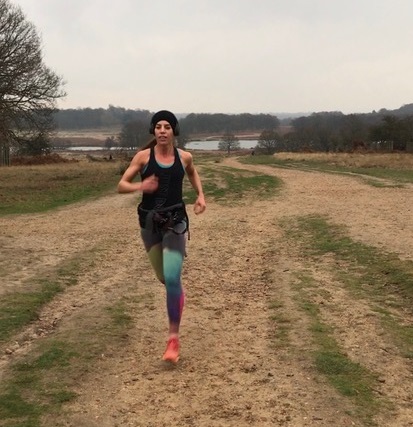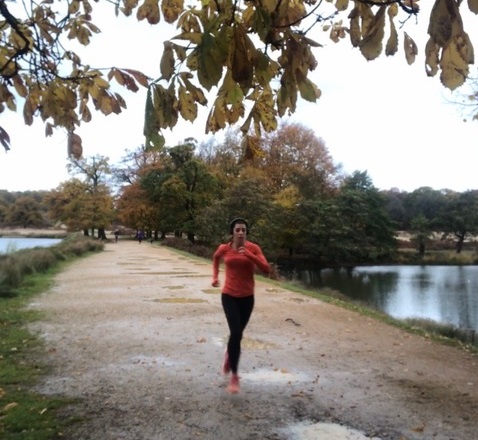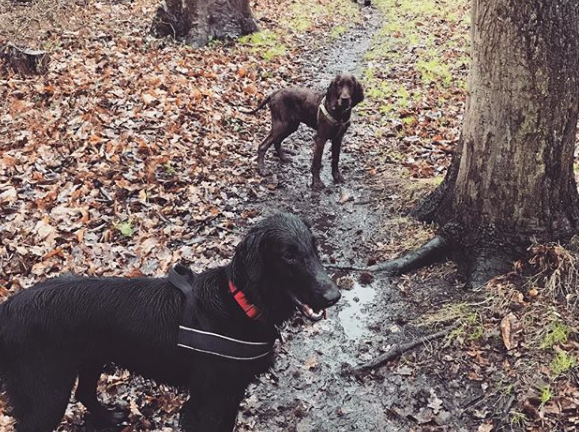With the Winter months looming and the likelihood of you wanting to hibernate rather than leap up out of bed to train quite high, you’ll need to set yourself up for success in a big way if you want to emerge the other side of Christmas with a strong, healthy body and mind. But the good news is that with winter running and training well throughout the colder months, you will have accelerated your results ten-fold by the time Spring arrives. ‘Train to be at your best, when you feel at your worst’ is a great mantra that I learnt from my experience on SAS: Who Dares Wins.
One other thing I learned, whilst submerging myself in ice holes high up in the frozen lakes of the Andes, was that no matter how cold your environment is, you can get warm by moving your body. So, pull up your big pants, avoid the treadmill and keep cabin fever at bay when the days get shorter, rainier and 10 degrees colder.
They say there’s no such thing as bad weather, only unsuitable clothing, so here are my fail-safe top tips for getting outside whatever the conditions and getting a workout into your day.
1. Check the weather
Leave it to chance and you’re already on the back foot. If you know it’s going to rain – or snow – the night before, you can prepare. Find your gloves, extra socks, lightweight rain jacket in advance. Lay them out ready to go. If you live in the UK and expect to find good training weather every time you fling open the curtains in the morning, you’ll be very disappointed and very inactive.
I’ll never forget being in New York during a particularly heavy snow dump and having made it my mission the day before to acquire a pair of running crampons (the likes of which you can only find in a place like New York). The following morning, in spite of almost 7 inches of snow, I was running sure-footed around Central Park laying down the first tracks of the day, much to the envy of others who were sliding around the pavements. And now that I have this kind of kit in my running arsenal, there are no weather conditions I’m likely to encounter in the UK that I can’t handle.

2. See the bigger picture
Winter running will make you a better runner. Fact. Your muscles work less efficiently in the winter, your body produces more lactate. Cold, dry air can make breathing more difficult. If you can see these things as opportunities to get fitter, rather than reasons not to bother, you’re winning.Adapt to winter conditions and you’ll be stronger, faster, more robust. You’ll have to deal with difficult terrain, wind, and rain, your joints will become more stable and you’ll find that the tough conditions really clear your head. Not least because you’ll have to focus harder on what you’re doing. No time to wish you were somewhere warmer or more comfortable. You’ll be right there, in the moment. Filling your lungs with cold, crisp air. There’s nothing better.
3. Take care of your extremities
My friend and top skin guru insists that I wear a barrier cream on my face and hands when I go running in the cold. It helps avoid the burning sensation of the skin both when you hit the cold or wet weather and when you return home for a shower afterwards. If you’re planning a few burpees to break your run up, wear two pairs of gloves so that if one pair gets wet, your hands will still be warm and dry. Layer up with merino wool which lets moisture out but doesn’t allow it in. Merino also acts as a barrier to bacteria so won’t make you sweaty or retain an odour.

4. Plan for anything
During Winter months, the the sun can go down very quickly. Wear a head torch and test the battery so you are prepared for sudden nightfall or lack of visibility. Depending on how long you plan to go out for, take spares (an extra hat, gloves, maybe even a map in case your phone battery fades, pack a light jacket, snacks and oil you’re going off-piste and you’re alone, a survival bag might be a good idea.) Make sure you tell someone you are going and when you expect to be back. Safety first, always!
5. Adapt your running style to the conditions
Wet weather and snow can mask all kinds of terrain; hidden rocks, potholes, puddles. Focus on high cadence steps to ensure you get a good grip every step. Keep your centre of mass over your feet and don’t lean backwards when going downhill. If it’s particularly cold/wet/miserable, think about doing a quick warm up at home. 20 hill-climbers, 20 jumping jacks and 20 air squats should help get the blood flowing and your heart pumping so that when you open the door, you won’t be hit so hard by the elements.

6. Take a dog with you
No explanation required! Don’t sit inside in the warm with the heating on if you lack motivation to exercise at this time of year. With a bit of planning, you can be ready for any weather and any terrain. And boy will you feel all the better for it.

I’m thrilled to be writing a monthly column for @dailystruggleuk and each month, I’ll be sharing some of the strategies that I use on a daily basis to train for general physical and mental preparedness. I do not believe that I am the most talented person out there, or even the strongest, fastest or fittest, but I do have an inner drive to be the best I can at whatever I do – and I never, ever give up.
Follow Vicki on Instagram @vickianstey and @barreworks